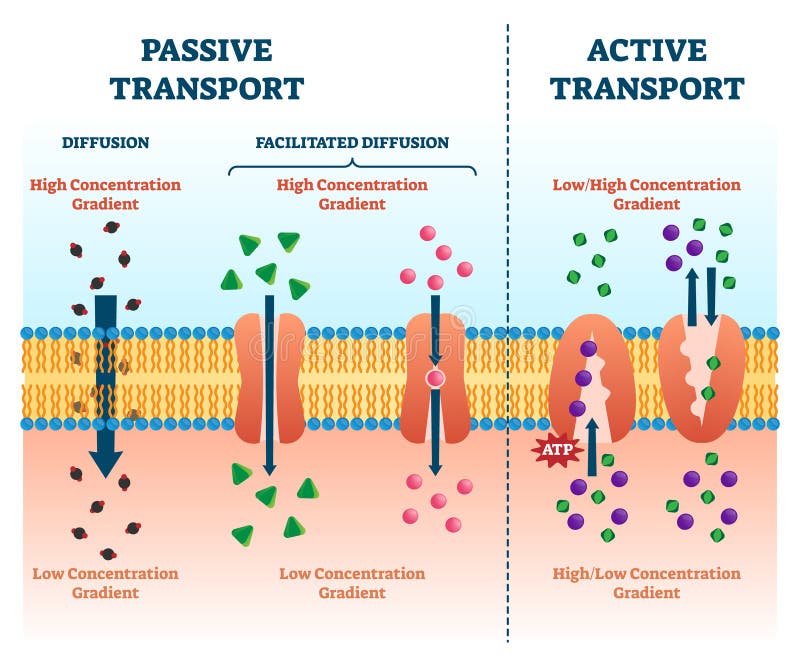Transport [active, passive, coupled, + osmosis]
Transport through biological membranes

Transport through the cell membrane is divided into
passive and active transport.
 |
| SOURCE |
Active transport goes on not according to the concentration difference. Substances are transported from a lower concentration to a larger one, that's why this type of transport requires energy.
Proteins using in transport:
○ Carrier protein
○ Pump
Transported substances:
○ ions, e.g. H⁺ (by membrane pumps and carrier proteins)
○ chemical compounds, e.g. saccharose (only by carrier proteins)
Passive transport goes on according to the concentration difference. Substances are transported from a larger concentration to a lower one. This type of transport doesn't require energy.
Proteins using in transport:
○ Carrier protein (facilitated diffusion)
○ Channel protein (facilitated diffusion)
○ Without proteins (simple diffusion)
Transported substances (faciliated diffusion):
○ chemical compounds such as simple sugars (e.g. glucose, which is transported by carrier proteins), amino acids, nucleotides
○ metabolism products
○ ions, e.g. Na⁺ (by channel proteins)
Transported substances (simple diffusion):
○ oxygen
○ water
○ carbon dioxide
Coupled transport
Carrier proteins and pumps can transport ions and molecules in a coupled way, i.e. dependent. It means that the transfer of one molecule of a substance depends on the simultaneous transfer of the other.
Symport - transport of molecules is in the same direction
Antiport - transport of molecules is in the against directions
Uniport - transport of one kind of molecules according to the concentration difference
...........................................................Osmosis...........................................................
Osmosis is a type of simple diffusion. However, during osmosis there isn't transport of substance molecules. It consists in the penetration of water through the membrane in order to equalize the concentration of the substances on both sides of the membrane. Water always penetrates from a hypotonic solution, where there is a lower concentration, to a hypertonic solution with a higher concentration.
Isotonic solution
When two solutions have the same concentration, they are isotonic. Although their concentrations do not change, they also exchange water, which flows in both directions in the same amounts.




Comments
Post a Comment